





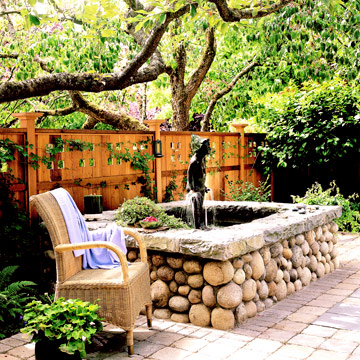
The most obvious -- and fastest -- way of creating privacy is to put up a fence.
Fences help keep your neighbors from seeing into your yard. They also provide a sense of enclosure and safety, making them a perfect option if you have children: Fences keep kids in and strangers -- or animals, such as dogs -- out.
If you choose to build a fence to add privacy to your landscape, select a material and style that complements your home.
Here's a hint: If you want to create a private space in your yard, look around before you build a fence. You might be able to use existing structures to create privacy. For example, tuck a small patio or deck next to your garage or home. Screening just one or two sides may be all you need.
Click here for more on building fences
continue reading below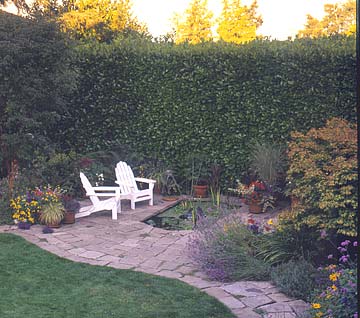
If a fence is too stark, grow a hedge. There are shrub varieties perfect for using as hedges for every region.
For a natural look, mix it up a little and combine a variety of shrubs. Don't be afraid to mix in a small tree or two for extra height, color, and texture. By planting species with different sizes, shapes, and colors, you can layer the plants into a beautiful mosaic.
For a more formal look, prune or shear shrubs regularly. Note: The best time to prune your hedge depends on what type of shrub you're growing.
Here's a hint: If you shear your shrubs, keep them looking good for years by ensuring the bottom of the shrub is wider than the top.
Here are the best plants for hedges.
Get tips for pruning shrubs.
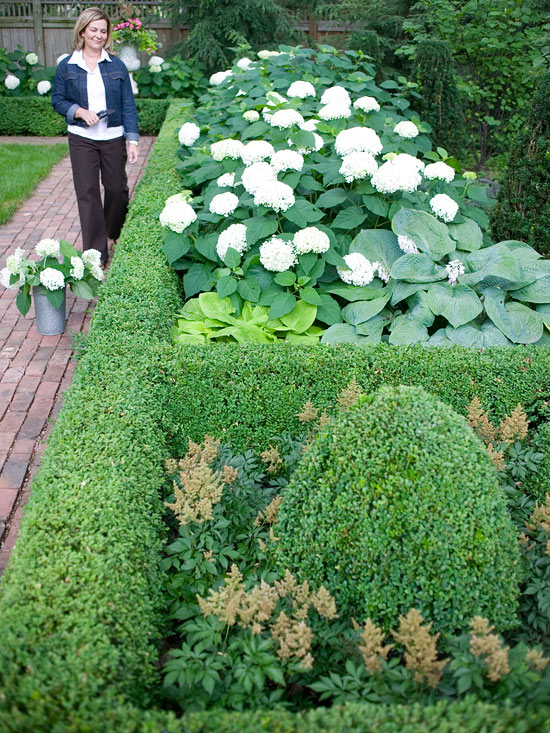
Boxwood (Buxus sempervirens), Zones 6-8
Columnar juniper (Juniperus scopulorum'Skyrocket'), Zones 4-7
Columnar white pine (Pinus strobus'Fastigiata'), Zones 3-9
English laurel (Prunus laurocerasus), Zones 6-9
Pittosporum tobira, Zones 9-10
Privet (Ligustrum vulgare), Zones 5-8
Yaupon holly (Ilex vomitoria), Zones 8-10
Yew (Taxus x media), Zones 5-7
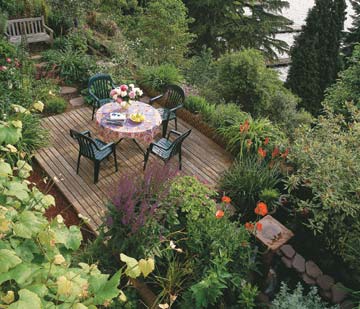
Berms are basically miniature hills in the landscape. They add height to plantings, which can be an effective way to create privacy. A berm is also good for highlighting smaller plants, as it can bring them to eye level.
Because of their sloping sides, berms drain better than flat beds, so they're well-suited for rock garden plants and any species that prefer dry soil.
Plant trees and shrubs on berms to form a useful physical and sound curtain between the street and yard. Include rocks and stones to give the mound stability.
Here's a hint: If you make a berm, a ratio of one foot of height to every four feet of width is usually suitable to keep mulch from running down the slope.
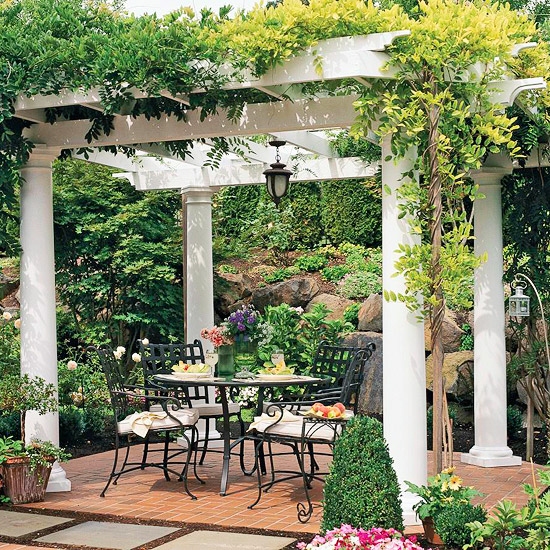
While a pergola probably won't block out your entire yard, it's a great solution for adding privacy to a smaller space.
A vine-covered pergola creates a private, shady nook underneath -- perfect for a secluded bench or patio. A pergola also adds year-round structure to the landscape.
You can create different levels of privacy with pergolas, too. A simple vine-covered pergola provides a little privacy; running lattice panels between the pergola columns will add even more. Hanging sheets of outdoor-friendly fabric to act as curtains will give you even more seclusion.
Click here for more on pergola ideas
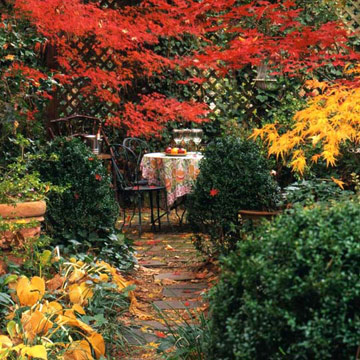
If you just have a spot or two you want to block from view (or where you want the view blocked from), try setting up a few inexpensive lattice panels and planting a small garden bed around them.
Tidy vines will give the lattice panels extra interest -- and help them feel integrated into the landscape.
Be sure you have the right vine for the right spot. Big vines can easily crush a lattice panel, arbor, or even small pergola as they grow.
Small vines, on the other hand, may not grow large enough to adequately cover a large arbor or pergola.
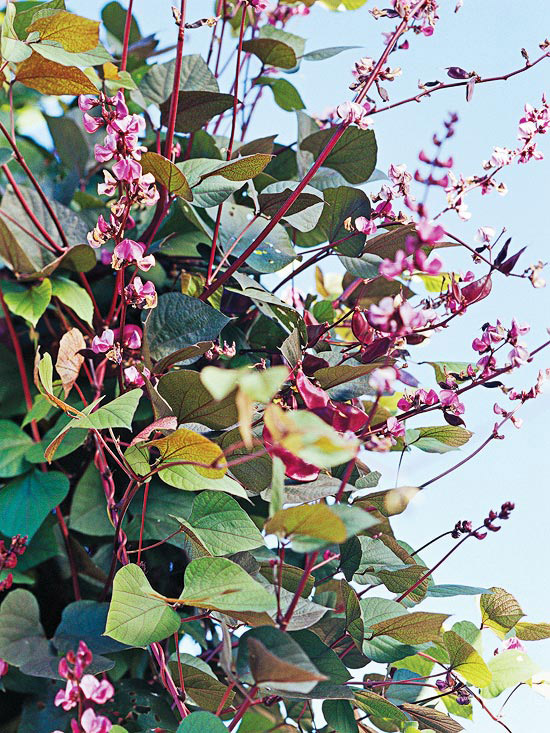
Black-eyed Susan vine (Thunbergia alata), Zone 10, but usually grown as an annual
Cardinal vine (Ipomoea x multifida), annual
Clematis, Zones 3-10, depending on type
Hyacinth bean (Lablab purpureus), Zone 10, but usually grown as an annual
Morning glory (Ipomoea tricolor), annual
Click here for more on great annual vines
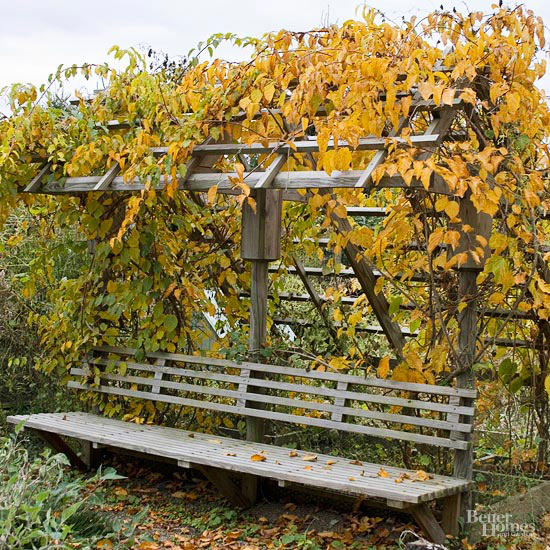
American bittersweet Celastrus scandens), Zones 3-8
Chocolate vine (Akebia quinata), Zones 5-9
Climbing hydrangea (Hydrangea petiolaris), Zones 4-9
Hardy kiwi (Actinidia arguta), Zones 3-8
Trumpet vine (Campsis radicans), Zones 4-9
Wisteria, Zones 5-9
Learn about other perennial vines.
Copyright © www.100flowers.win Botanic Garden All Rights Reserved